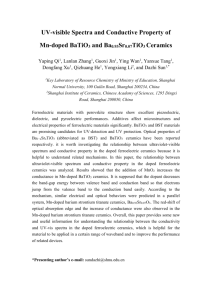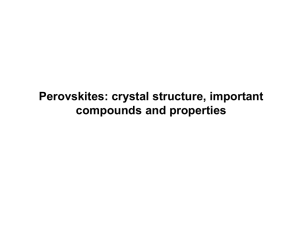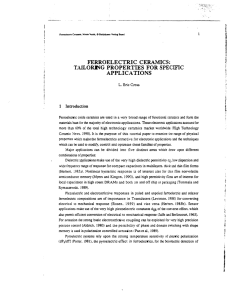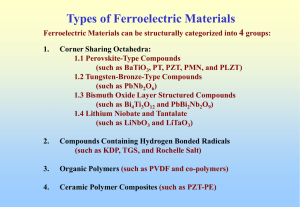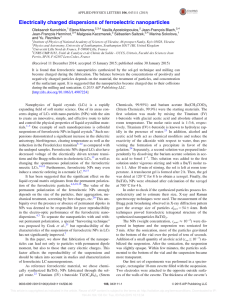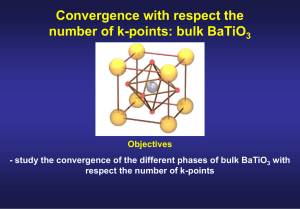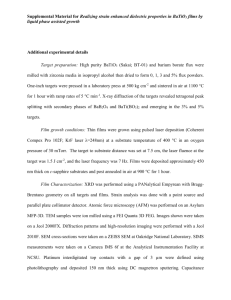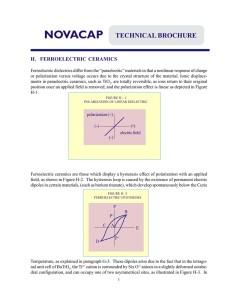Using Solid State Chemistry to understand the structure
advertisement
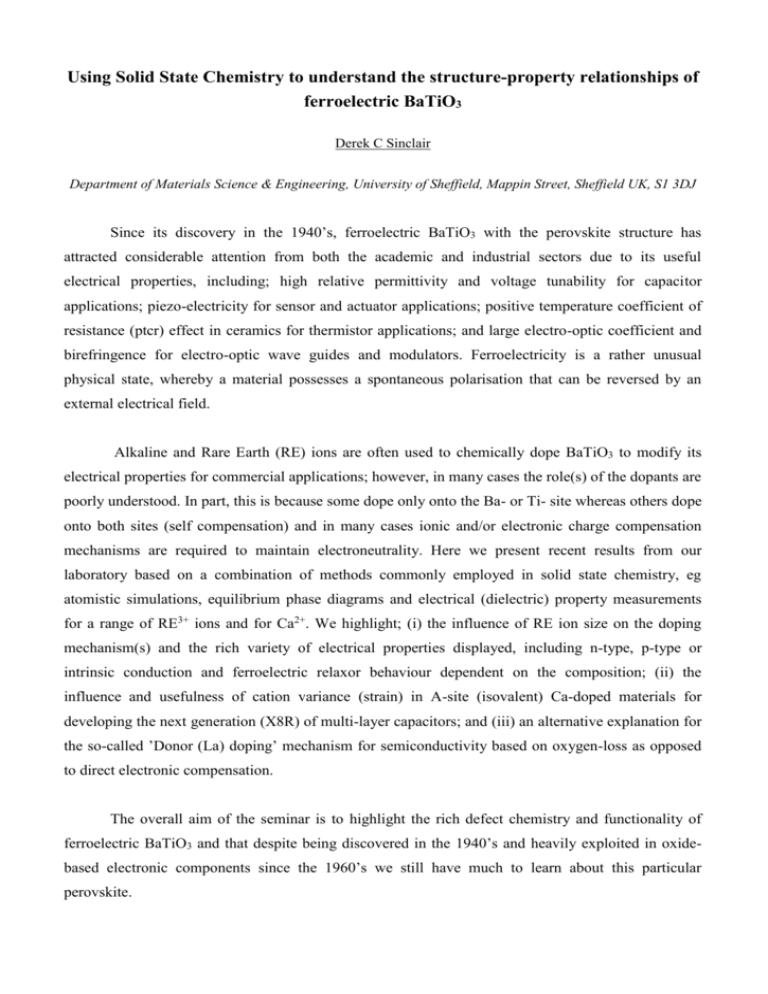
Using Solid State Chemistry to understand the structure-property relationships of ferroelectric BaTiO3 Derek C Sinclair Department of Materials Science & Engineering, University of Sheffield, Mappin Street, Sheffield UK, S1 3DJ Since its discovery in the 1940’s, ferroelectric BaTiO3 with the perovskite structure has attracted considerable attention from both the academic and industrial sectors due to its useful electrical properties, including; high relative permittivity and voltage tunability for capacitor applications; piezo-electricity for sensor and actuator applications; positive temperature coefficient of resistance (ptcr) effect in ceramics for thermistor applications; and large electro-optic coefficient and birefringence for electro-optic wave guides and modulators. Ferroelectricity is a rather unusual physical state, whereby a material possesses a spontaneous polarisation that can be reversed by an external electrical field. Alkaline and Rare Earth (RE) ions are often used to chemically dope BaTiO3 to modify its electrical properties for commercial applications; however, in many cases the role(s) of the dopants are poorly understood. In part, this is because some dope only onto the Ba- or Ti- site whereas others dope onto both sites (self compensation) and in many cases ionic and/or electronic charge compensation mechanisms are required to maintain electroneutrality. Here we present recent results from our laboratory based on a combination of methods commonly employed in solid state chemistry, eg atomistic simulations, equilibrium phase diagrams and electrical (dielectric) property measurements for a range of RE3+ ions and for Ca2+. We highlight; (i) the influence of RE ion size on the doping mechanism(s) and the rich variety of electrical properties displayed, including n-type, p-type or intrinsic conduction and ferroelectric relaxor behaviour dependent on the composition; (ii) the influence and usefulness of cation variance (strain) in A-site (isovalent) Ca-doped materials for developing the next generation (X8R) of multi-layer capacitors; and (iii) an alternative explanation for the so-called ’Donor (La) doping’ mechanism for semiconductivity based on oxygen-loss as opposed to direct electronic compensation. The overall aim of the seminar is to highlight the rich defect chemistry and functionality of ferroelectric BaTiO3 and that despite being discovered in the 1940’s and heavily exploited in oxidebased electronic components since the 1960’s we still have much to learn about this particular perovskite.



